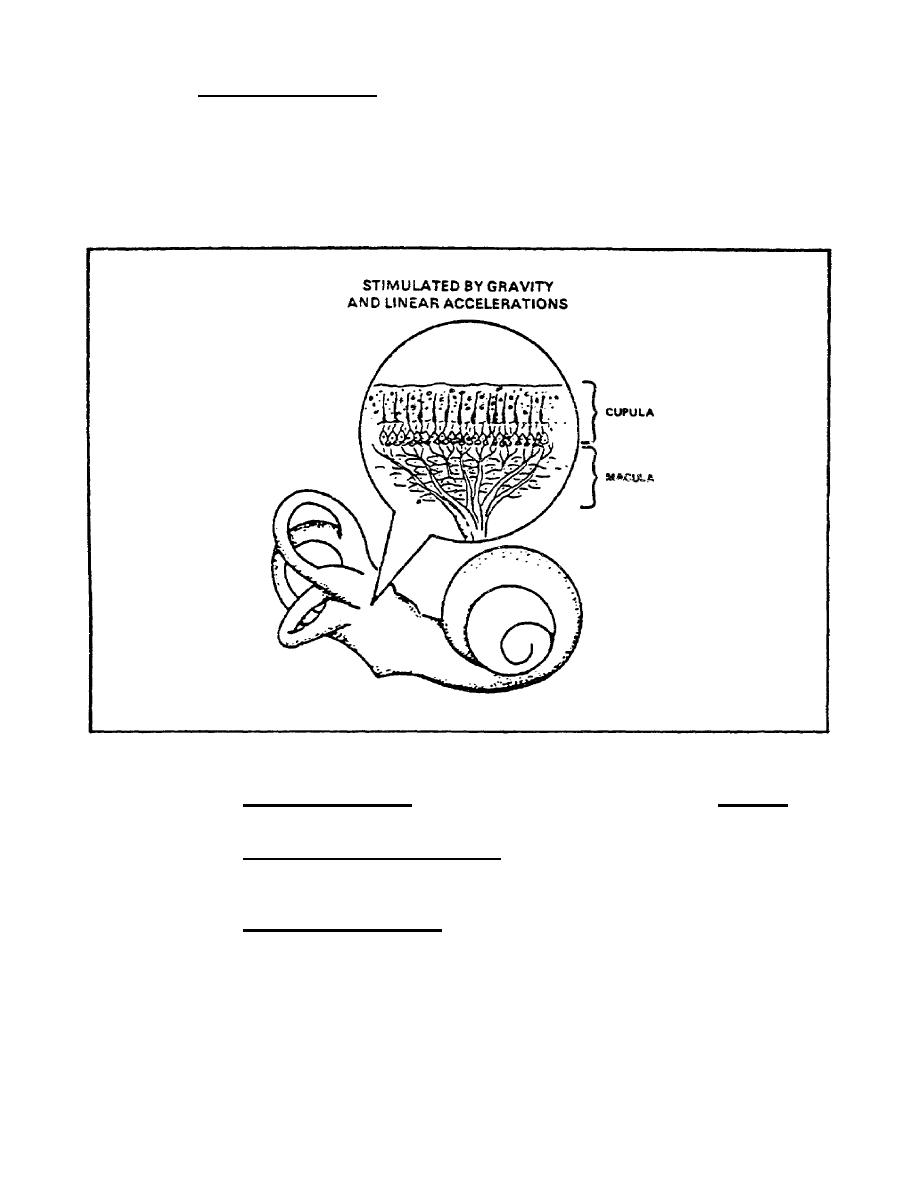
(1) The otolith organs: The otolith organs are small sacs located in
the vestibule. The sensory hairs project from each macula into an overlying
gelatinous membrane (the cupula) containing chalk-like crystals called
otoliths (Figure 14). These organs normally respond to gravity and changes
in head position relative to the gravitational force. Changes in the
gravitational force cause the otolithic membrane to shift position on the
macula, thus bending the sensory hairs and signaling the change in head
position.
Figure 14.
Otolith organs of the inner ear.
(a) Resting frequency. When the head is upright, a resting
frequency of nerve impulses is generated by the hair cells.
(b) Altering resting frequency. When the head is tilted, the
resting frequency is altered to inform the brain of the new position of the
head relative to the vertical.
(c) Linear accelerations. Linear accelerations also stimulate
the otolith organs since inertial forces resulting from linear accelerations
(Figure 15) cannot be distinguished from gravitational forces. A forward
acceleration, for example, results in a backward displacement of the otolith
membranes which can create the illusion of backward tilt of the head when
adequate visual reference is not available.
39




 Previous Page
Previous Page
